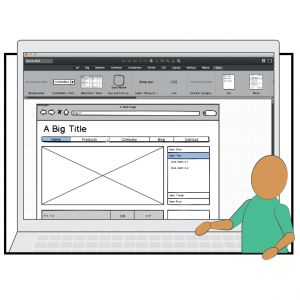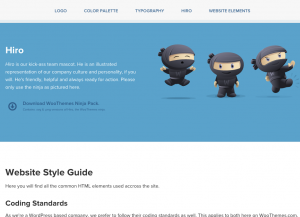Over the past few years, we’ve worked with a number of clients who have been implementing design pattern libraries. Some clients appear to have seen more value from this work than others. After assisting in the effort of building them, what follows are some important lessons learned along the way.
What is a design pattern library?
- A pattern library is made up of the ideal solution to common design challenges (e.g. login screen, basic forms and lists, etc.). Inherent with the library is an attempt at uniformity and consistency across a set of digital assets.
What is the potential value of a design pattern library?
- Consistency: As mentioned above, one may gain consistency with design elements, user interfaces, and interaction designs across multiple projects and platforms.
- Prescriptive: The user experience team can offer prescriptive solutions via a design pattern library. This enables development teams to easily access approved code, image assets, etc. In addition, the library can be shared with vendors or third parties that are working on projects or customizing their offerings.
- Extending Limited Resources: There never seems to be enough user experience resources for all of the projects within an organization. By creating a design pattern library, one may realize the benefit of having project teams self-serve to some degree. Another way to look at this is that these project teams can understand the basics from the library, and limited user experience resources can advise on their implementation or application to a project thus realizing a time savings.
WooTheme Style Guide
- Rallying Point: By pointing everyone in your organization to an agreed upon set of standards, it forces the user experience team to agree amongst themselves what the proper approach will be to the set of common problems. In addition, the work naturally lends itself to engaging other groups in a dialogue about these solutions.
What are the pitfalls to avoid?
- Scope Creep: It is important that the group starting the effort of creating a design pattern library has a clear set of goals in mind. In an effort to try to appease others, it is very easy to allow the scope to become so large by adding more and more to it. The challenge here is that it too often becomes unmanageable in the end. If need be, consider creating separate libraries.
- Lack of Governance: There is often a tremendous amount of effort spent in standing up a design pattern library. It is easy to believe that one is done and can move onto other concerns; however, here is often where the real work begins. It is nearly impossible to have a completely comprehensive set of guidelines, so one must consider additions as well as the inevitable exceptions to what has been put forth. It is best to get in front of these unavoidable situations by setting up a governing board and a regular cadence of meetings to consider them.
- Under Estimating the Time and Effort: The maintenance of the pattern library will be an ongoing concern. Changes in technology as well as the resulting updates needed after governance decisions will necessitate a repeated updating of the library and communicating out the resulting changes and additions. Depending on the size of the organization, this often becomes a part-time if not full-time job. It is all to easy to underestimate the amount of time and effort this takes.
Where can I find out more about design pattern libraries?
- UX Style Guide Examples (http://styleguides.io/examples.html)
- UI Patterns (http://ui-patterns.com/)
- Mobile Design Patterns (http://pttrns.com/)
- Mobile Patterns (http://www.mobile-patterns.com/)
- Inspired UI (http://inspired-ui.com/
What are the key take aways about design pattern libraries?
- While useful in certain contexts, one must keep in mind the proper planning and effort involved in creating a design pattern library and maintaining it.
- When properly employed, a design pattern library is a great communication tool for a user experience team when working with marketing, development, etc.

